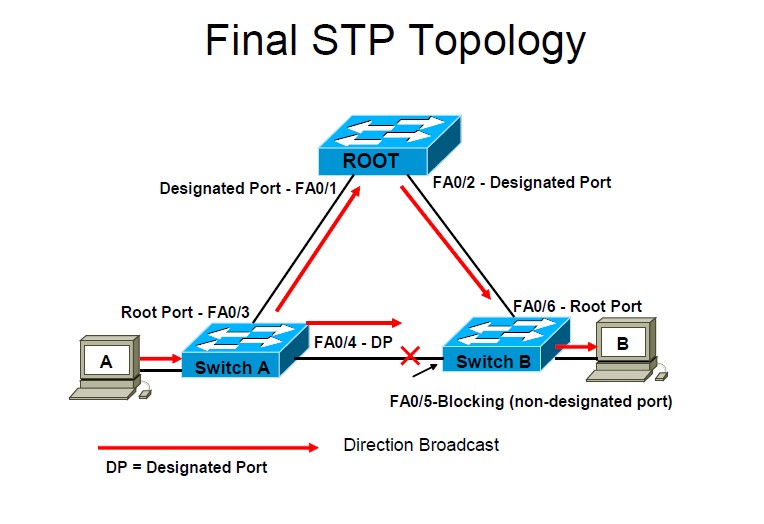In an STP enabled LAN, a switch is designated as the root bridge. The root bridge serves as an admin point for all spanning-tree calculations to determine which redundant links are blocked. An election process takes place, determining which switch becomes the root bridge.
Each switch has a Bridge ID (BID) that is made up of:
- priority value
- extended system ID
- MAC address of the switch
All STP enabled switches in the network take part in the election process. When a switch boots up, BPDU frames containing the switch BID and the root ID are sent out every 2 seconds. By default, the root ID matches the local BID for all switches on the network. The root ID identifies the root bridge on the network. Initially, each switch identifies itself as the root bridge after bootup.
When switches A, B, C and D are on the same network or broadcast domain boots up, the switches will forward their Bridge Protocol Data Unit (BPDU) frames to neighbouring switches. All switches in the network or broadcast domain will read the root ID information from the BPDU frame of all their neighbours.
After reviewing the entire root ID’s from the BPDU received from each switch, the switch with the lowest BID ends up being identified as the Root Bridge for the spanning tree process. It may not be an adjacent switch, but any other switch in the broadcast domain.
